Let’s DIY: Creating Bar Stools for Your Home
Are you ready to transform your living space with some stylish and functional bar stools? Building your own bar stools can be an incredibly rewarding project that not only enhances your home decor but also adds a personal touch to your space. Imagine the satisfaction of crafting something with your own hands that you can proudly showcase to friends and family. In this article, we’ll dive into the exciting process of designing and creating bar stools tailored to your style and needs. From selecting the right design to gathering materials and tools, we’ll guide you every step of the way. So, let’s roll up our sleeves and get started on this DIY adventure!
When it comes to bar stools, the design you choose is crucial. It’s not just about functionality; it’s about how well the stools fit into your overall home decor. Are you leaning towards a modern aesthetic with sleek lines and minimalist features? Or perhaps you’re drawn to a rustic style, with warm woods and a cozy vibe? The possibilities are endless! Consider your existing furniture and color schemes, and think about how your new bar stools will complement them. You might want to explore designs such as:
- Contemporary: Clean lines and bold colors.
- Farmhouse: A blend of comfort and charm.
- Industrial: Metal accents and raw finishes.
- Vintage: Retro designs that evoke nostalgia.
By choosing a design that resonates with you, you’ll ensure that your bar stools not only serve a purpose but also enhance the overall ambiance of your home.
Now that you’ve settled on a design, it’s time to gather the materials that will bring your vision to life. The right materials are essential for durability and aesthetics. When it comes to wood, you have several options to consider. Each type of wood brings its own unique qualities to the table. For instance, oak is known for its strength and beautiful grain, while pine is a more affordable and lightweight option. Plywood is also a great choice for those looking for versatility and ease of use. Here’s a quick comparison of popular wood types:
| Wood Type | Benefits |
|---|---|
| Oak | Durable, stylish grain, long-lasting. |
| Pine | Affordable, lightweight, easy to work with. |
| Plywood | Versatile, stable, great for DIY projects. |
As you choose your materials, don’t forget about upholstery options! Adding cushions can significantly enhance comfort, so consider fabrics that not only look good but are also durable. Think about color schemes that will tie in with your existing decor, and explore various finishing techniques to give your stools that polished, professional look.
Before diving into the construction phase, it's crucial to gather the right tools. Having the right tools on hand will make your DIY experience smoother and more enjoyable. Essential hand tools include saws for cutting wood, drills for making holes, and sanders for smoothing out rough edges. If you’re looking to speed up the process, power tools like jigsaws and nail guns can save you time and effort. Here’s a quick rundown of essential tools:
- Hand Tools: Saws, drills, sanders.
- Power Tools: Jigsaws, nail guns.
Investing in quality tools will not only make your project easier but will also ensure that your bar stools are built to last.
Ready to get your hands dirty? Let’s walk through the step-by-step process of building your bar stools. First, accurate measurements and cuts are crucial for a well-built stool. Take your time measuring and marking your wood before making any cuts. Once you have your pieces cut, it’s time to assemble them! Use strong joinery methods to secure your joints, ensuring that your stools are stable and durable. Don’t rush this part; a well-constructed stool will serve you well for years to come.
After assembling your bar stools, the fun part begins: adding the finishing touches! Staining your wood can enhance its natural beauty, while sealing it will protect against wear and tear. Choose stains and finishes that complement your design and bring out the character of the wood. Additionally, consider personalizing your stools with custom cushions or decorative accents. These unique touches will make your bar stools truly one-of-a-kind!
1. How long does it take to build bar stools?
Building bar stools can take anywhere from a few hours to a couple of days, depending on your skill level and the complexity of the design.
2. What is the best height for bar stools?
The standard height for bar stools is usually between 28 to 30 inches, which pairs well with counter heights of 36 to 39 inches.
3. Can I use reclaimed wood for my bar stools?
Absolutely! Reclaimed wood adds character and is an eco-friendly choice. Just make sure it’s in good condition and properly treated.
Now that you’re equipped with all this knowledge, it’s time to unleash your creativity and start building your own bar stools. Happy DIYing!

Choosing the Right Design
When it comes to designing your own bar stools, the first step is to consider how they will fit into your existing home decor. After all, these stools are not just functional pieces; they are also a reflection of your personal style. Think about the overall vibe of your space. Is it modern and sleek, or does it lean more towards a cozy, rustic feel? The right design can seamlessly blend with your surroundings, enhancing both functionality and aesthetics.
There are several styles to choose from, and each offers its own unique charm. For instance, if you’re aiming for a contemporary look, consider sleek lines and minimalist designs. On the other hand, if you prefer a more traditional atmosphere, bar stools with intricate carvings and rich wood tones might be the way to go. Here are a few popular styles to consider:
- Modern: Characterized by clean lines, geometric shapes, and often made from metal or molded plastics.
- Rustic: Usually crafted from reclaimed wood, featuring a more rugged and natural aesthetic.
- Industrial: Incorporates metal and wood, often with a vintage or factory-like feel.
- Traditional: Features classic designs with ornate details, often made from hardwood.
As you explore these styles, think about the height and functionality of your stools as well. Will they be used at a kitchen island, a home bar, or a dining table? The height of your bar stools should correspond with the height of the surface they will be paired with. A general rule of thumb is to allow for about 10-12 inches of space between the seat of the stool and the underside of the bar or counter. This ensures comfort and ease of movement.
Another aspect to consider is the color scheme. Choosing the right color can make all the difference in how your bar stools fit into the overall decor. If your home features neutral tones, you might want to opt for a bold color to create a striking contrast. Alternatively, if your space is already vibrant, a more subdued tone could help maintain balance. Don’t shy away from experimenting with different finishes, such as matte or glossy, to add depth to the design.
In summary, selecting the right design for your bar stools is about more than just aesthetics; it’s about creating a cohesive look that enhances your home. Take your time to explore various styles, consider the practical aspects like height and functionality, and don’t forget about color and finish. With a little creativity and planning, you can craft bar stools that are not only stylish but also perfectly suited to your space.
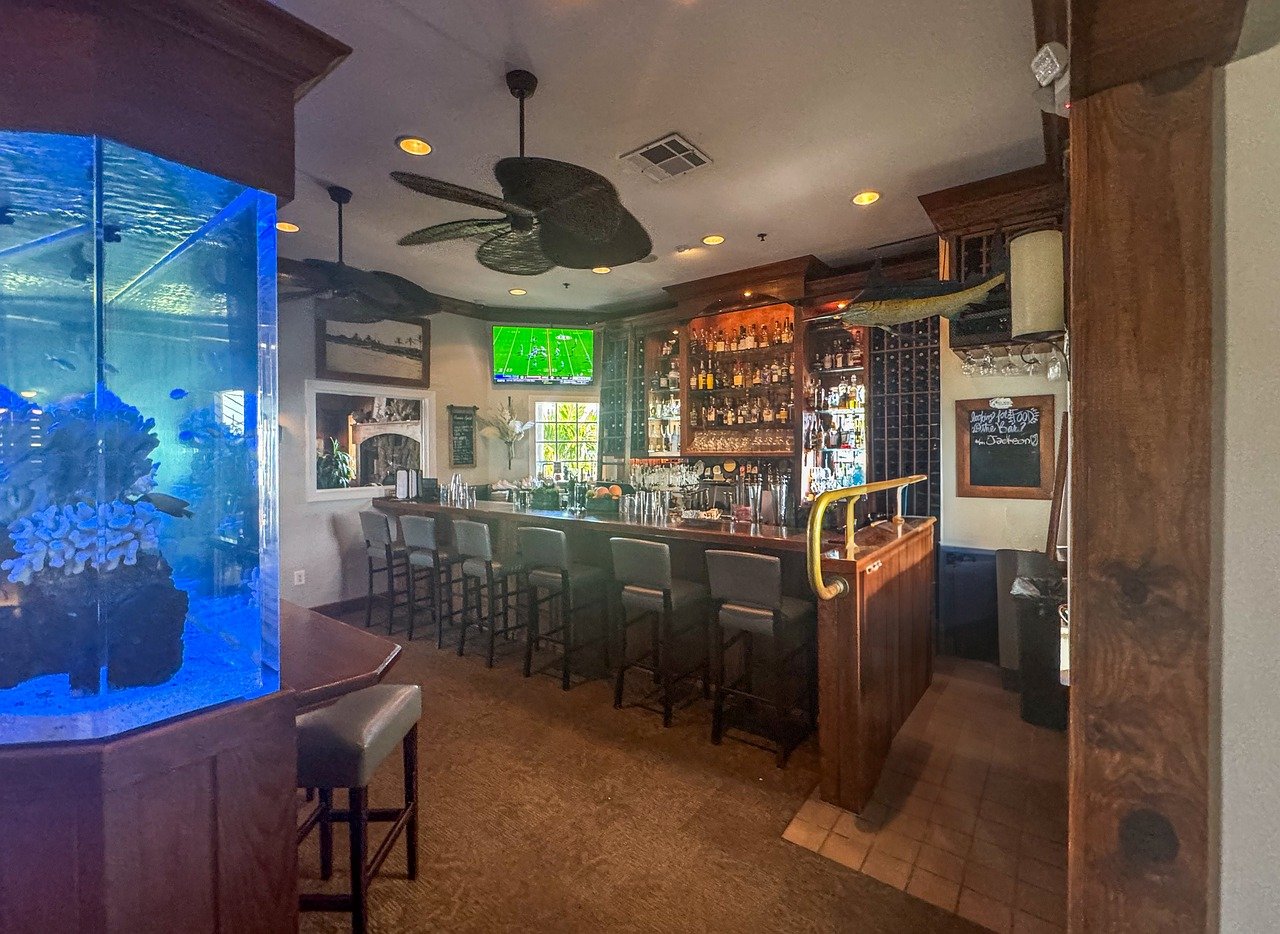
Materials You’ll Need
When it comes to crafting your own bar stools, the choice of materials can make or break your project. Not only do you want your stools to be stylish, but they also need to be durable enough to withstand daily use. So, let’s dive into the essential materials you’ll need to create stunning bar stools that fit perfectly within your home.
First and foremost, wood is the backbone of your bar stool. The type of wood you choose will affect the overall look and longevity of your stools. Popular options include:
- Oak: Known for its strength and beautiful grain, oak is a fantastic choice for a classic look.
- Pine: Lightweight and easy to work with, pine is perfect for those on a budget.
- Plywood: This is an excellent option for a more modern aesthetic, especially if you want to incorporate curves into your design.
Now, if you’re wondering about the differences between softwood and hardwood, here’s a quick rundown:
| Type | Characteristics | Examples |
|---|---|---|
| Softwood | Generally lighter and easier to work with, but less durable. | Pine, Cedar |
| Hardwood | Denser and more durable, often with beautiful grains. | Oak, Maple |
For those of you who are environmentally conscious, consider looking into eco-friendly options. Sustainable woods, such as bamboo or reclaimed wood, not only reduce your ecological footprint but also add a unique character to your stools. Plus, using recycled materials can save money while contributing to a healthier planet.
Next up is upholstery. Adding fabric to your bar stools can provide a layer of comfort and enhance their aesthetic appeal. When selecting upholstery, consider the following:
- Fabric Type: Choose between leather, cotton, or synthetic options based on your style and maintenance preferences.
- Color and Pattern: This is your chance to get creative! Think about colors that complement your existing decor.
Lastly, don’t forget about the finishes. A good finish not only protects your wood but also enhances its beauty. Consider using stains to bring out the grain, or paints if you want a pop of color. Sealing your stools with a protective coat will ensure they stand the test of time against spills and scratches.
In summary, gathering the right materials is crucial for building bar stools that are not only functional but also a reflection of your personal style. With the right wood, upholstery, and finishes, your DIY bar stools will surely become a stunning addition to your home.

Wood Selection
When it comes to building your own bar stools, the choice of wood is not just a matter of aesthetics; it’s about finding that perfect balance between strength, durability, and style. The right wood can transform your bar stools from mere furniture into stunning focal points in your home. Let's dive into some of the most popular wood types that can elevate your DIY project.
First up is oak, a classic choice that is renowned for its durability and beautiful grain patterns. Oak is a hardwood, which means it's tough enough to withstand daily use, making it ideal for bar stools that see a lot of action. Plus, its natural beauty can be enhanced with staining or left as is to showcase its unique characteristics.
Next, we have pine, a softwood that is not only budget-friendly but also easy to work with. If you’re a beginner, pine might be the way to go. It’s lightweight and can be painted or stained to match your decor. However, keep in mind that while it’s more affordable, it may not hold up as well under heavy use compared to hardwoods.
Plywood is another excellent option, especially for those looking to create a modern or minimalist design. Made from thin layers of wood glued together, plywood is incredibly versatile and can be used for both the seat and the legs of your bar stools. It’s also eco-friendly if you opt for sustainably sourced plywood, making it a great choice for the environmentally conscious DIYer.
To help you decide, here's a quick comparison of these wood types:
| Wood Type | Durability | Cost | Best For |
|---|---|---|---|
| Oak | High | Moderate to High | High-traffic areas |
| Pine | Moderate | Low | Budget-friendly projects |
| Plywood | Moderate to High | Moderate | Modern designs |
In addition to these common choices, you might also consider hardwoods like maple or cherry for a more luxurious feel, or even teak, which is perfect for outdoor bar stools due to its natural resistance to moisture. Each wood type has its own unique qualities that can enhance your bar stool project, so think about what fits best with your personal style and practical needs.
Ultimately, the wood you choose will not only affect the look of your bar stools but also their longevity and functionality. So, take your time, do your research, and select the wood that speaks to you. After all, these stools will not just be a place to sit; they'll be a part of your home’s story.
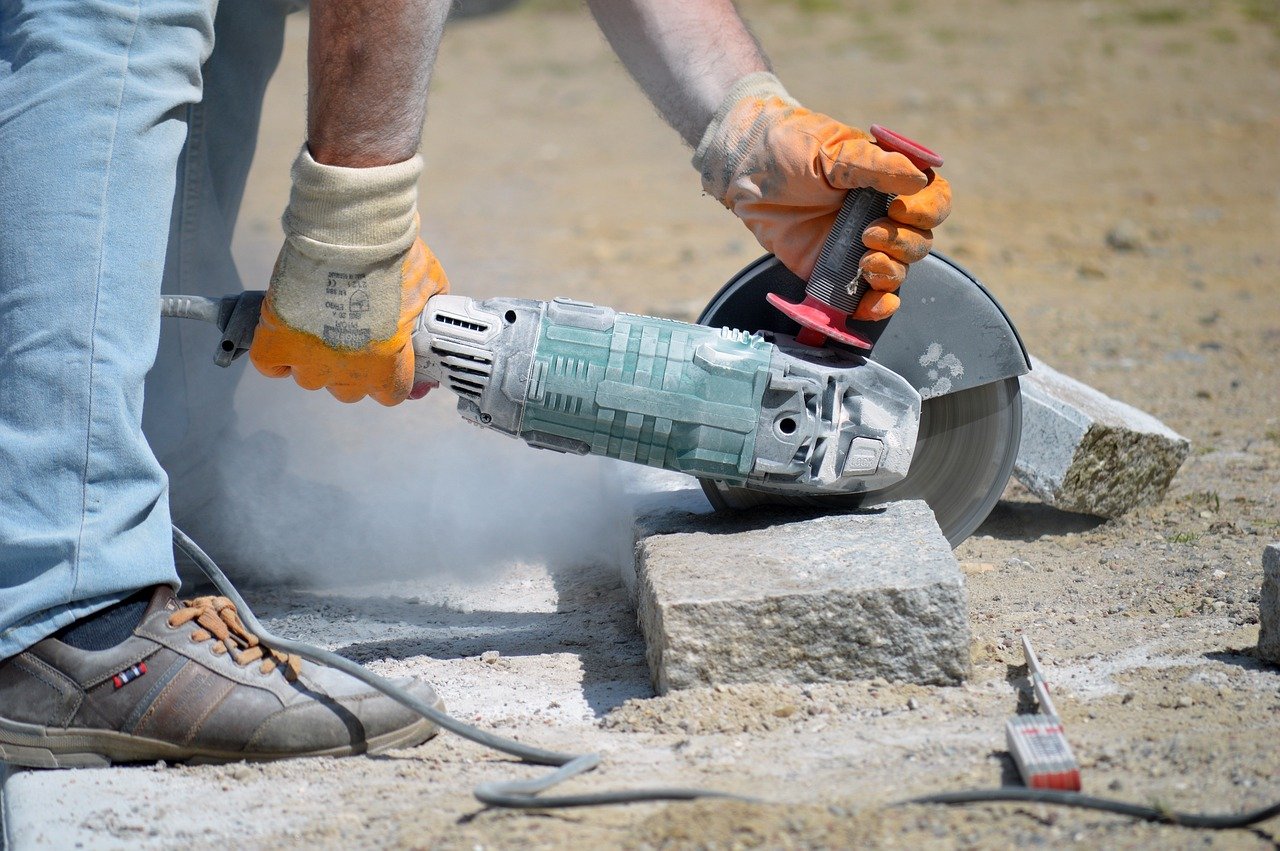
Softwood vs. Hardwood
When it comes to choosing the right wood for your DIY bar stools, understanding the differences between softwood and hardwood is essential. Each type of wood has its own unique characteristics, benefits, and drawbacks that can significantly influence the durability, appearance, and cost of your finished product.
Softwoods are typically sourced from coniferous trees, such as pine, cedar, and fir. These woods are generally lighter, easier to work with, and more affordable than hardwoods. For DIY enthusiasts, softwoods can be a great option, especially if you're a beginner. They are forgiving when it comes to mistakes and can be easily cut and shaped. However, softwoods tend to be less durable and more susceptible to dents and scratches, which might be a concern if your bar stools will see heavy use.
On the other hand, hardwoods come from deciduous trees like oak, maple, and cherry. These woods are known for their strength, density, and longevity. If you're looking for bar stools that can withstand the test of time, hardwoods are the way to go. They offer a rich aesthetic appeal with beautiful grain patterns and colors, which can add a touch of elegance to your space. However, the trade-off is that hardwoods are often more expensive and can be more challenging to work with, requiring specialized tools and techniques.
To help you make an informed decision, let’s break down some of the key differences between softwood and hardwood in a simple table:
| Feature | Softwood | Hardwood |
|---|---|---|
| Source | Coniferous trees | Deciduous trees |
| Density | Less dense | More dense |
| Durability | Less durable | Highly durable |
| Cost | Generally cheaper | Generally more expensive |
| Workability | Easy to work with | Can be challenging to work with |
Ultimately, the choice between softwood and hardwood comes down to your specific needs and preferences. If you're after a budget-friendly option that’s easy to handle, softwood may be the best fit for you. However, if you're keen on crafting bar stools that are not only beautiful but also built to last, investing in hardwood will pay off in the long run. Remember, the right choice can transform your DIY project from just functional to a stunning centerpiece in your home.
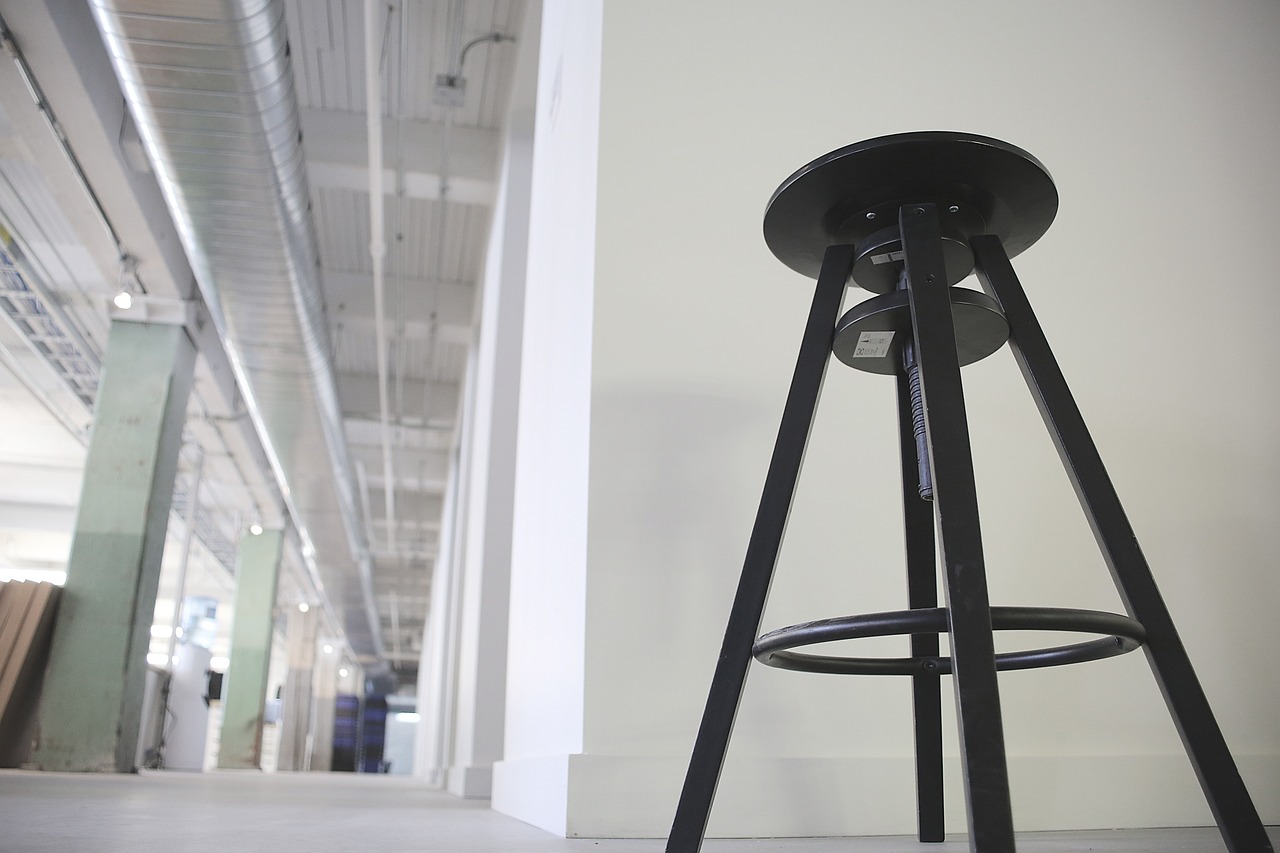
Eco-Friendly Options
When embarking on your DIY bar stool project, it's essential to consider the environmental impact of your materials and methods. Opting for not only helps in reducing your carbon footprint but also supports sustainable practices that can benefit our planet. One of the best ways to start is by selecting sustainable wood sources. Look for wood certified by organizations like the Forest Stewardship Council (FSC), which ensures that the wood is harvested responsibly, promoting forest conservation and better forest management practices.
Another great option is to use reclaimed wood. This not only gives your bar stools a unique character but also reduces the demand for new lumber, which can be a significant contributor to deforestation. Reclaimed wood can be sourced from old furniture, pallets, or even deconstructed buildings. Imagine the stories behind each piece of wood, adding a rich history to your stylish seating!
In addition to wood selection, consider the finishing products you use. Many traditional stains and paints contain harmful chemicals that can emit volatile organic compounds (VOCs) into the air. Instead, look for low-VOC or zero-VOC options that are safer for both your health and the environment. These products are often just as effective in providing a beautiful finish while minimizing your exposure to harmful substances.
Finally, when it comes to upholstery, consider using fabrics made from organic materials, such as cotton, hemp, or linen. These materials are not only sustainable but also free from harmful pesticides and chemicals that are often used in conventional textile production. By choosing organic fabrics, you’re not only ensuring a healthier home environment but also supporting eco-friendly farming practices.
| Material Type | Eco-Friendly Benefits |
|---|---|
| FSC-Certified Wood | Responsible sourcing and forest conservation |
| Reclaimed Wood | Unique character and reduces demand for new lumber |
| Low/Zero-VOC Finishes | Safer for health and environment |
| Organic Fabrics | Free from harmful chemicals and supports eco-friendly farming |
In conclusion, embracing eco-friendly options while creating your bar stools can significantly enhance the sustainability of your project. By selecting responsibly sourced materials, using safe finishes, and opting for organic upholstery, you can create beautiful, functional pieces that are kind to the planet. So, as you embark on this exciting DIY journey, remember that your choices can make a difference!
- What is reclaimed wood, and where can I find it? Reclaimed wood is salvaged from old buildings, furniture, or pallets. You can find it at salvage yards, online marketplaces, or specialty reclaimed wood suppliers.
- Are low-VOC finishes as durable as regular finishes? Yes, low-VOC finishes are designed to be just as durable as traditional finishes while being safer for the environment.
- How do I maintain eco-friendly bar stools? Regular cleaning with mild soap and water, along with periodic refinishing, will help maintain the beauty and durability of your eco-friendly bar stools.

Upholstery and Finishes
When it comes to building your own bar stools, are not just afterthoughts; they are the cherry on top that can transform your creation from ordinary to extraordinary. Imagine sinking into a plush seat that not only looks fabulous but also feels comfortable. Choosing the right upholstery fabric and finish can elevate your bar stools, making them inviting and stylish additions to your home.
First off, let's talk about upholstery fabrics. The fabric you choose will influence both the look and durability of your bar stools. Popular options include leather, which is known for its luxurious feel and easy maintenance; canvas, which is durable and comes in a variety of colors; and velvet, which adds a touch of elegance. Each fabric has its unique charm, so consider the overall aesthetic you want to achieve. For example, if you’re going for a modern vibe, sleek leather might be your best bet. On the other hand, if you prefer a cozy, rustic look, a soft, textured fabric could be the way to go.
But don’t forget about color! The color of your upholstery can make a huge impact. Bright colors can add a pop of fun, while neutral tones can provide a classic, timeless look. If you’re feeling adventurous, consider mixing and matching colors or patterns to create a unique style that reflects your personality. Just remember, the fabric should complement the rest of your decor.
Now, let’s dive into finishes. The finish you choose for your bar stools is crucial, not only for aesthetics but also for protection. A good finish can help your stools withstand the test of time and everyday wear and tear. Common finishes include stains, paints, and sealants. Stains can enhance the natural beauty of the wood, highlighting its grain and texture, while paints allow for more creative expression. Sealants, on the other hand, provide a protective layer that guards against scratches and spills.
Here’s a quick comparison of different finishes:
| Finish Type | Pros | Cons |
|---|---|---|
| Stain | Enhances wood grain, easy to apply | May require multiple coats, can be messy |
| Paint | Wide variety of colors, good for customization | Can chip or scratch easily, requires primer |
| Sealant | Protects wood, easy to clean | Can alter the appearance of the wood |
Before applying any finish, make sure to properly prepare the surface. Sanding the wood will create a smooth base, allowing the finish to adhere better and providing a more professional look. Once you’ve applied your chosen finish, allow it to cure fully before using your bar stools. This patience will pay off with a stunning final product.
Lastly, don’t shy away from adding personal touches to your bar stools. Think about custom cushions or decorative accents that can make your stools truly one-of-a-kind. Whether it’s a funky pattern or a unique color combo, these little details can reflect your style and make your bar stools a conversation starter.
Q: What type of fabric is best for bar stools?
A: It depends on your style and how much wear and tear you expect. Leather is durable, while canvas is versatile and easy to clean.
Q: How do I maintain the upholstery on my bar stools?
A: Regularly vacuum and spot clean any spills. For leather, use a gentle cleaner and conditioner to keep it looking fresh.
Q: Can I paint my bar stools instead of staining them?
A: Absolutely! Painting allows for more color options, but ensure you use a durable paint that can withstand daily use.

Tools Required for the Job
Embarking on a DIY journey to create your own bar stools is an exciting venture, but before you dive in, it's crucial to gather the right tools. Having the appropriate tools not only makes the job easier but also ensures that your final product is sturdy and visually appealing. Imagine trying to build a house without a hammer—it's a recipe for disaster! Similarly, the right tools will be your best friends in this project. So, what do you need? Let’s break it down.
First on the list are the essential hand tools. These are the tools that you will rely on for most of the construction process. A good quality saw is indispensable for cutting your wood to the desired lengths. Whether you opt for a hand saw or a power saw, make sure it’s sharp and well-maintained. Next, a drill is crucial for making holes and driving screws. You’ll want a reliable drill that can handle various tasks, from simple screw driving to more complex drilling. Sanding is also an important step to achieve a smooth finish, so having a sander—either hand-held or power—is essential.
In addition to hand tools, you might want to consider investing in some power tools to speed up the process. Tools like a jigsaw can make intricate cuts easier, while a nail gun can save you time and effort when securing joints. Imagine the satisfaction of watching your project come together quickly and efficiently! However, if you’re new to power tools, make sure to read the manuals and practice safety precautions. Remember, safety first!
To give you a clearer picture, here’s a simple table of the tools you’ll need:
| Tool | Purpose |
|---|---|
| Saw | Cutting wood to size |
| Drill | Making holes and driving screws |
| Sander | Smoothing surfaces |
| Jigsaw | Making intricate cuts |
| Nail Gun | Securing joints quickly |
Now that you have an idea of the tools required, it’s time to gather them. Before you begin your project, double-check that you have everything on hand. There’s nothing worse than being in the middle of a project and realizing you’re missing a crucial tool! Having your workspace organized and your tools readily accessible will save you time and frustration, allowing you to focus on what really matters: creating beautiful bar stools that you can be proud of.
Q: Do I need power tools to build bar stools?
A: While power tools can make the process faster and easier, they are not strictly necessary. You can complete the project with hand tools, but expect it to take a bit longer.
Q: What if I don't have all the tools listed?
A: Don't worry! Many tools can be borrowed or rented from local hardware stores. Focus on acquiring the essential ones for your specific design.
Q: How can I ensure my bar stools are sturdy?
A: Pay close attention to assembly techniques and use quality materials. Properly securing joints and using the right screws will greatly enhance stability.
Q: Can I customize my bar stools?
A: Absolutely! Personal touches like custom upholstery or unique finishes can make your bar stools one-of-a-kind.

Essential Hand Tools
When diving into the world of DIY bar stool creation, having the right hand tools can make all the difference between a frustrating experience and a smooth, enjoyable project. Think of your tools as the magic wands of woodworking; they help you transform raw materials into beautiful, functional pieces for your home. So, what do you need? Let's break it down!
First and foremost, a hand saw is essential. Whether you opt for a traditional panel saw or a more modern Japanese pull saw, this tool will be your go-to for cutting wood to size. Remember, the quality of your saw can greatly affect the precision of your cuts, so investing in a good one is worthwhile.
Next up is the drill. A cordless drill is not only versatile but also a real time-saver when it comes to making pilot holes for screws. You’ll find that having the right drill bits on hand is just as important; a set that includes various sizes will ensure you're prepared for any situation. And let's not forget about a reliable screwdriver, which is indispensable for assembling your bar stools. A set with both flathead and Phillips options will cover most of your needs.
Another must-have is a sander. Sanding your stools will help achieve that smooth finish that feels great to the touch and looks professional. You can choose between a manual sanding block or an electric sander, depending on your comfort level and the size of your project. For corners and intricate designs, a detail sander can be a game changer.
Lastly, let’s talk about measuring tools. Accurate measurements are crucial for a well-built bar stool. A tape measure is a no-brainer, but consider adding a square to your toolkit as well. This tool helps ensure your cuts are straight and your angles are perfect, which is vital for stability in your finished product.
To summarize, here’s a quick look at the essential hand tools you'll need:
- Hand Saw
- Drill and Drill Bits
- Screwdriver Set
- Sander (manual or electric)
- Measuring Tape
- Square
Equipped with these tools, you're well on your way to crafting beautiful bar stools that will not only enhance your space but also give you a sense of accomplishment. Remember, the right tools can turn a daunting task into a delightful experience, so gather your gear and get ready to unleash your creativity!
Q: What is the most important tool for building bar stools?
A: While all tools are important, a good hand saw and drill are crucial for cutting and assembling your stools accurately.
Q: Can I use recycled wood for my bar stools?
A: Absolutely! Recycled wood can add character and uniqueness to your stools. Just ensure it's in good condition and free of pests.
Q: How long does it take to build a bar stool?
A: The time can vary depending on your skill level and design complexity, but on average, expect to spend a few hours to a full day on the project.
Q: Do I need any special skills to build bar stools?
A: Basic woodworking skills are helpful, but with the right tools and instructions, even beginners can successfully create bar stools!
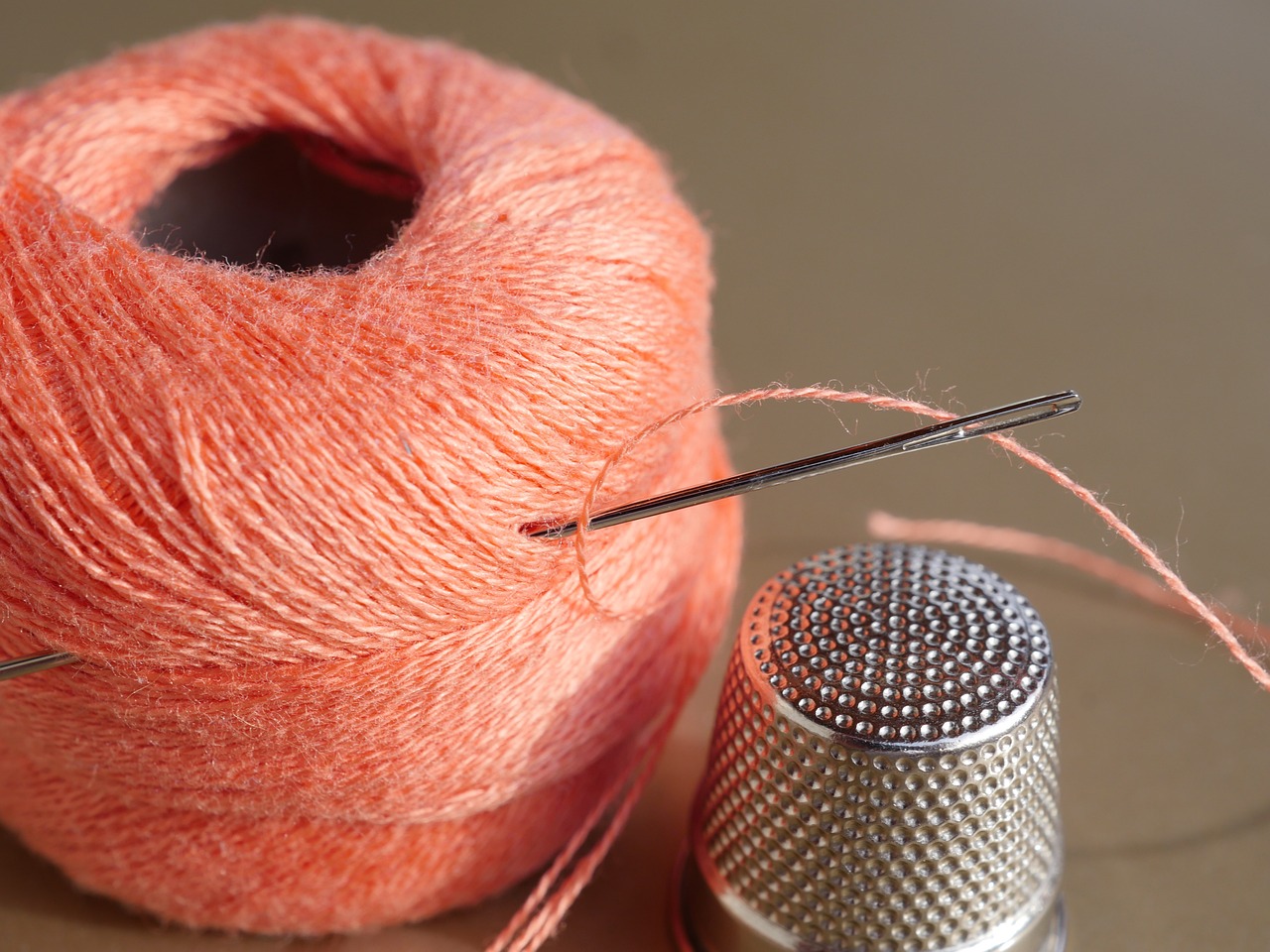
Power Tools Overview
When it comes to building your own bar stools, having the right set of power tools can make a world of difference. Imagine trying to carve a masterpiece with a dull knife; it's frustrating, right? The same principle applies here. Power tools not only save you time but also enhance the precision of your work. Let's dive into some essential power tools that can elevate your DIY experience from ordinary to extraordinary.
First off, a jigsaw is an absolute game-changer. This versatile tool allows you to make intricate cuts in various materials, including wood and plywood. Whether you're crafting a unique design or following a template, a jigsaw gives you the flexibility to bring your vision to life. Just picture cutting smooth curves and angles effortlessly—it's like having a magic wand for wood!
Next up is the power drill. This trusty companion is indispensable for drilling holes and driving screws. Think of it as your best friend in the workshop; it helps you assemble your bar stools with ease. Opt for a cordless model for added convenience, allowing you to move freely without being tethered to an outlet. You’ll appreciate the freedom of working anywhere in your space!
Another tool worth mentioning is the nail gun. If you want to speed up your assembly process, a nail gun is the way to go. It drives nails into wood with precision and speed, significantly reducing the time spent hammering. Imagine how satisfying it is to see your bar stools come together in a fraction of the time it would take with a traditional hammer!
For those who want to achieve a smooth finish, a power sander is essential. This tool takes the labor out of sanding, allowing you to create a polished surface that feels as good as it looks. Whether you’re using a belt sander for larger areas or a detail sander for tight spots, you’ll find that a power sander offers a level of efficiency that hand sanding simply can’t match.
Finally, a table saw is a fantastic investment if you plan on making multiple bar stools or other furniture pieces. This tool allows for straight cuts with high accuracy, making it easier to replicate parts consistently. It’s like having a professional woodworking shop right in your garage!
To summarize, here’s a quick table of the power tools discussed:
| Tool | Purpose |
|---|---|
| Jigsaw | For intricate cuts and curves |
| Power Drill | For drilling holes and driving screws |
| Nail Gun | For fast assembly of pieces |
| Power Sander | For achieving a smooth finish |
| Table Saw | For straight, accurate cuts |
Equipped with these power tools, you’ll find that building your bar stools becomes not just a project but a rewarding experience. So, are you ready to unleash your inner craftsman and create something truly special for your home?
Q: Do I need to be an expert to use power tools?
A: Not at all! Many power tools are user-friendly, and with a little practice, you’ll feel comfortable using them. Just start with simple projects and gradually work your way up.
Q: Are power tools expensive?
A: While some power tools can be pricey, there are many affordable options available. Consider borrowing tools or purchasing used ones to save money.
Q: Can I build bar stools without power tools?
A: Yes, but it will take significantly longer and require more effort. Power tools help streamline the process, making it more enjoyable and efficient.
Q: What safety precautions should I take when using power tools?
A: Always wear safety goggles, ear protection, and a dust mask if necessary. Read the instruction manual for each tool and follow safety guidelines to prevent accidents.
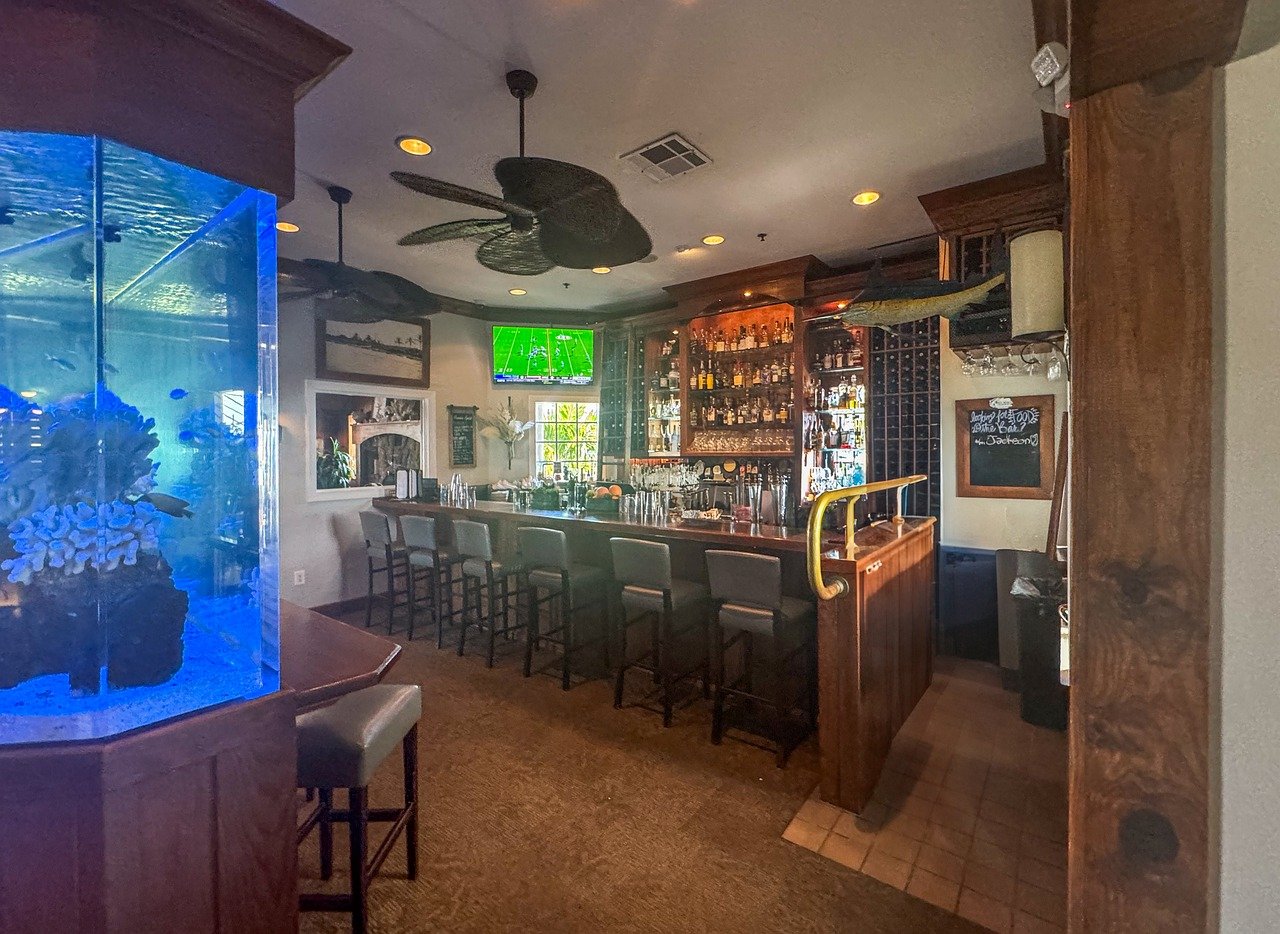
Step-by-Step Instructions
Now that you’re all set with your materials and tools, it’s time to dive into the exciting part—building your very own bar stools! This process can seem daunting, but don't worry; we’ll break it down into simple, easy-to-follow steps that will have you sitting pretty in no time. Remember, the key to a successful DIY project is patience and precision, so take your time and enjoy the journey!
First things first, let’s talk about measuring and cutting. Accurate measurements are the backbone of any successful project. Start by measuring the height of your bar or counter; standard bar stools are typically around 30 inches tall. You’ll want your seat height to be about 10-12 inches lower than the bar height for optimal comfort. Once you have your measurements, grab your saw and get ready to cut your wood pieces. Here’s a quick overview of the pieces you’ll need:
| Part | Dimensions |
|---|---|
| Seat | 18"x18" |
| Legs | 30" (4 pieces) |
| Footrest | 18" (2 pieces) |
Once you’ve made your cuts, it’s time for assembly. This is where your creativity can shine. Start by attaching the legs to the seat. You can use wood glue and screws for a sturdy bond. Make sure to pre-drill holes to prevent the wood from splitting. As you’re assembling, ensure everything is square; this will help maintain stability and durability in your bar stools.
But wait, there’s more! You’ll also want to think about how to secure the footrest. This can be done by attaching it between the two front legs. Not only does this provide additional support, but it also gives your bar stools a polished look. Follow these steps:
- Position the footrest at your desired height (usually around 8-10 inches from the ground).
- Secure it with screws, making sure it’s level and firmly attached.
After everything is assembled, it’s time to focus on the finishing touches. Sand down any rough edges to give your bar stools a smooth finish. You don’t want anyone getting splinters while enjoying their drink, right? Once you’ve sanded them down, you can choose to stain or paint your stools. This is where you can really let your personality shine through, so pick colors that complement your home decor.
Finally, consider adding some upholstery to the seat for extra comfort. You can use foam padding and fabric of your choice. Simply cut the padding to size, attach it to the seat with adhesive, and then wrap the fabric around, securing it with a staple gun underneath the seat. Voila! Your bar stools are now not only functional but also stylish.
Q: How long does it take to build bar stools?
A: Depending on your skill level and the complexity of the design, it can take anywhere from a few hours to a couple of days. Just remember to take your time and enjoy the process!
Q: What type of wood is best for bar stools?
A: Hardwoods like oak or maple are great for durability, while softer woods like pine are easier to work with for beginners. Choose based on your comfort level and desired finish.
Q: Can I customize the height of my bar stools?
A: Absolutely! Just measure your bar height and adjust the leg lengths accordingly. Customization is one of the best parts of DIY projects!
So there you have it! With these step-by-step instructions, you’re well on your way to creating beautiful, personalized bar stools for your home. Happy building!

Measuring and Cutting
When it comes to creating your own bar stools, accurate measuring and cutting are the cornerstones of a successful project. Imagine trying to fit a square peg into a round hole; that’s what it feels like when your measurements are off. To avoid this, start by determining the height of your bar stools. A standard bar stool height ranges from 28 to 32 inches, depending on the height of your bar or counter. Make sure to measure from the floor to the underside of the counter to get the perfect fit.
Next, you’ll want to consider the width of your stools. A comfortable width generally falls between 16 to 20 inches. This range allows for ample seating without taking up too much space. Once you have your dimensions, it’s time to mark your wood. Use a pencil to make clear, visible marks on the wood where you’ll be cutting. This will help ensure that you stay on track as you cut.
Now, let’s talk about cutting. The type of saw you choose can make a big difference in the quality of your cuts. For straight cuts, a circular saw is often the best choice, while a jigsaw can help you navigate curves and intricate designs. Always remember to wear safety goggles and a mask to protect yourself from dust and debris. Before making your cuts, double-check your measurements and ensure your wood is securely clamped down to prevent any movement.
Here’s a simple table to summarize the key measurements for your bar stools:
| Measurement | Recommended Range |
|---|---|
| Height | 28 - 32 inches |
| Width | 16 - 20 inches |
| Depth | 14 - 18 inches |
Once you’ve made your cuts, it’s time to smooth the edges. Use a sander to round the edges and remove any splinters. This not only enhances the safety of your stools but also gives them a polished look. Remember, the goal is to create a piece that’s not only functional but also aesthetically pleasing.
In summary, measuring and cutting your materials correctly is crucial in building bar stools that are both stylish and sturdy. Take your time, double-check your work, and soon enough, you’ll have beautiful bar stools that are the perfect addition to your home!
- What tools do I need for measuring and cutting? You will need a measuring tape, a pencil for marking, and a saw (either circular or jigsaw) for cutting.
- How do I ensure my cuts are straight? Use a straight edge or guide to help keep your saw on track, and always make sure your wood is securely clamped down.
- What should I do if I make a mistake in my measurements? Don’t panic! Measure again to see where the error occurred and adjust your cuts accordingly. Wood can often be salvaged with some creative thinking!

Assembly Techniques
Assembling your DIY bar stools is where all your hard work in the previous steps comes together. It’s like putting the icing on a cake; the final touches can make all the difference! To ensure your stools are not just functional but also sturdy and stylish, you’ll want to pay close attention to the assembly techniques you employ. First off, it’s crucial to have a clear plan in mind. Before you start, lay out all your pieces and visualize how they will come together. This will help you avoid any surprises along the way.
When it comes to joining the parts of your bar stool, there are several methods you can choose from. The most common techniques include using wood glue, screws, and dowels. Each method has its own advantages:
- Wood Glue: This is a fantastic option for a seamless look. It bonds the wood fibers together, creating a strong joint when properly applied. Just remember to clamp the pieces together while the glue dries for optimal strength.
- Screws: These are great for providing extra stability. Use screws to secure the seat to the legs, ensuring that your stool can withstand the weight of sitting and standing. Make sure to pre-drill holes to prevent the wood from splitting.
- Dowels: Dowels can provide a clean and professional finish. By drilling matching holes in both pieces and inserting a dowel, you can create a strong joint that’s hidden from sight.
Another critical aspect of assembly is ensuring that all joints are square and level. A misaligned joint can lead to an unstable stool, which is the last thing you want! Use a carpenter's square to check that all corners are at right angles, and a level to confirm that your stool sits evenly on the ground. If your bar stool has a footrest, make sure it’s positioned at a comfortable height for sitting. A good rule of thumb is to place it about 12 inches from the seat. This will provide support without cramping your legs.
Once everything is aligned, it’s time to secure the joints. For a more robust assembly, consider using corner brackets or L-brackets on the underside of the stool. This added support can help prevent wobbling and extend the life of your furniture. After securing everything, give your stool a gentle shake to test its stability. If it feels sturdy, congratulations! You’re well on your way to creating a beautiful piece of furniture.
Finally, don’t forget about aesthetics. If you’ve opted for visible screws or brackets, consider painting or staining them to match your stool for a cohesive look. This attention to detail will make your DIY bar stools not only functional but also a stylish addition to your home.
Q: What type of wood is best for bar stools?
A: Hardwoods like oak or maple are great for durability, while softer woods like pine are easier to work with. It really depends on your style and budget!
Q: How do I ensure my bar stools are stable?
A: Make sure all joints are secure and check that the legs are evenly cut. Use a level to confirm stability before finishing.
Q: Can I customize the height of my bar stools?
A: Absolutely! Just adjust the length of the legs during the cutting phase to suit your bar height.
Q: What is the best finish for my bar stools?
A: A good stain followed by a sealant will protect the wood and enhance its appearance. Choose a finish that matches your decor!

Finishing Touches
Now that you've put in the hard work to build your bar stools, it’s time to add those that will truly make them shine! This is where your creativity can really take flight. Think of this stage as the icing on the cake—without it, your stools might just look like any other piece of furniture. So, how do you elevate your DIY project to a stunning centerpiece in your home? Let’s dive into some exciting options!
First up, staining and sealing your bar stools can dramatically enhance their appearance. Staining not only highlights the natural grain of the wood but also adds depth and character. You can choose from a variety of stains, from light oak to dark walnut, depending on the aesthetic you’re aiming for. After staining, it’s crucial to apply a sealant to protect your investment from scratches, spills, and the wear and tear of everyday use. A good sealant will ensure that your stools look fabulous for years to come.
When selecting your stain and sealant, consider the following:
| Type | Best For | Notes |
|---|---|---|
| Oil-Based Stains | Rich color and durability | Longer drying time |
| Water-Based Stains | Quick drying and easy cleanup | Less odor, but may raise wood grain |
| Polyurethane Sealants | Durability and water resistance | Available in matte, satin, and gloss finishes |
Once your stools are stained and sealed, it’s time to think about upholstery. Adding cushions can provide not just comfort but also a splash of color or texture. You can choose from a variety of fabrics, such as leather for a sleek, modern look or cotton for something more casual and cozy. Don't shy away from experimenting with colors and patterns—this is your chance to reflect your personal style! Make sure to use high-density foam for the cushions to ensure they remain comfortable over time.
Finally, let’s talk about adding personal touches. This is where you can really make your bar stools unique. Consider incorporating custom elements such as:
- Decorative Accents: Think about adding trim or nailhead details around the cushion edges.
- Custom Cushions: Create cushions in fabric that matches your home decor.
- Stencils or Paint: If you’re feeling artistic, why not paint a design or stencil a fun quote on the stool's surface?
By focusing on these finishing touches, you can transform your DIY bar stools from simple wooden seats into stunning pieces of art that are both functional and visually appealing. So, grab those brushes, fabrics, and sealants, and let your imagination run wild! Your guests will be in awe of your handiwork, and you’ll have the satisfaction of knowing you created something truly special.
Q1: How long should I let the stain dry before applying a sealant?
A1: It’s best to wait at least 24 hours after staining to ensure it's completely dry before applying a sealant. Always check the manufacturer's recommendations for specific products.
Q2: Can I change the color of my bar stools later?
A2: Yes! If you ever want to change the look of your bar stools, you can sand down the finish and re-stain or paint them. Just make sure to properly prepare the surface before applying new finishes.
Q3: What type of fabric is best for upholstery?
A3: It depends on your lifestyle! For high-traffic areas, consider durable fabrics like leather or canvas. For a softer touch, cotton or linen can work well, but may require more upkeep.

Staining and Sealing
Staining your bar stools is not just about aesthetics; it’s about enhancing the natural beauty of the wood while providing a protective layer that ensures durability. When you apply stain, you’re essentially allowing the grain of the wood to shine through, adding depth and character to your stools. Choosing the right stain can transform a simple piece of wood into a stunning focal point in your home.
Before diving into the staining process, it’s crucial to prepare your wood properly. Start by sanding the surface to a smooth finish; this step is vital because it helps the stain adhere better and creates a more uniform appearance. Use a fine-grit sandpaper and make sure to wipe away any dust with a damp cloth afterwards. Remember, preparation is key!
When selecting a stain, consider the color you want to achieve. There are numerous options available, from rich mahogany to light pine. You might want to test a few colors on a scrap piece of wood to see how they look once applied. Also, think about the type of stain: oil-based stains penetrate deeply and provide a long-lasting finish, while water-based stains dry quicker and are easier to clean up.
Once you've chosen your stain, apply it using a brush or rag. Work in small sections, applying the stain evenly and wiping off any excess after a few minutes. This will help you achieve the desired color intensity. It’s important to note that the longer you let the stain sit before wiping it off, the darker the color will become. So, don’t rush this step—patience pays off!
After the stain has dried completely, it’s time to seal your bar stools. Sealing is essential as it protects the wood from moisture, scratches, and spills. You can choose between polyurethane, varnish, or a penetrating oil finish. Each has its benefits:
| Finish Type | Benefits |
|---|---|
| Polyurethane | Durable, water-resistant, and available in matte to glossy finishes. |
| Varnish | Provides a hard finish and is excellent for outdoor use. |
| Penetrating Oil | Enhances the wood's natural beauty while offering a more natural look. |
To apply your chosen sealant, use a clean brush or a foam applicator, and make sure to follow the manufacturer's instructions. Generally, you will want to apply at least two coats, allowing each coat to dry thoroughly before applying the next. This ensures that your bar stools are well-protected and have a beautiful finish that will last for years.
Lastly, don’t forget to add your personal touch! Consider adding custom cushions or decorative accents that match your home decor. This not only enhances comfort but also makes your bar stools uniquely yours. With a little effort and creativity, you can create stunning bar stools that are both functional and a true reflection of your style.
Q: How long does it take for stain to dry?
A: Typically, stain takes about 4-6 hours to dry, but it’s best to check the manufacturer’s instructions for specific drying times.
Q: Can I use a different type of wood stain on my bar stools?
A: Yes, you can use various types of wood stains, but make sure to test them on a small area first to see how they interact with the wood.
Q: How often should I reapply the sealant?
A: It depends on usage, but generally, it’s a good idea to reapply the sealant every few years or when you notice signs of wear.

Adding Personal Touches
When it comes to creating your own bar stools, the fun really begins with the personal touches. These unique elements not only reflect your personality but also enhance the overall aesthetic of your space. Think of your bar stools as a blank canvas; you can paint them with your style and creativity! Whether it's through custom cushions, unique finishes, or decorative accents, there are endless ways to make your stools truly one-of-a-kind.
One popular way to add a personal touch is through upholstered cushions. You can choose fabrics that resonate with your home decor—perhaps a vibrant color that pops or a subtle pattern that adds texture. Consider using outdoor fabric for durability if your stools will be placed in a patio or garden area. Not only will this provide comfort, but it will also make your bar stools inviting and cozy.
Don't shy away from creative finishes either! Instead of a standard wood stain, why not experiment with a whitewash or a bold paint color? You could even try a distressed look for a rustic charm. If you're feeling adventurous, consider using stencils to add designs or patterns that speak to your style. This can be a fun project to do with family or friends, making it a memorable experience while creating something beautiful.
Another fantastic way to personalize your bar stools is through decorative accents. Think about adding elements like wooden carvings, metal embellishments, or even attaching small shelves for drinks or snacks. You could also incorporate your favorite quotes or sayings by painting them on the stool's surface. This not only makes your stools stand out but also serves as a conversation starter when guests come over.
Lastly, don’t forget about the placement and arrangement of your bar stools. This can significantly affect the overall vibe of your space. Experiment with different arrangements and see what feels best. You might find that a circular arrangement encourages more interaction, while a linear setup looks sleek and modern. Whatever you choose, make sure it feels right for you and your home!
In summary, adding personal touches to your DIY bar stools is an exciting part of the process. It allows you to express your style and creativity, making your stools not just functional pieces of furniture but also unique works of art. So gather your materials, unleash your imagination, and let your bar stools tell your story!
- What type of fabric is best for upholstery?
Choosing a durable fabric, such as canvas or outdoor fabric, is ideal as it withstands wear and tear while providing comfort. - Can I use paint on wood bar stools?
Absolutely! Using chalk paint or acrylic paint can give your bar stools a fresh and vibrant look. - How do I maintain my bar stools after finishing?
Regular cleaning and applying a protective sealant can help maintain the beauty and longevity of your bar stools. - What tools do I need for adding personal touches?
Basic tools like brushes, stencils, and a sewing kit for cushions will suffice for most personalizations.
Frequently Asked Questions
- What materials do I need to build my own bar stools?
To create your own bar stools, you'll need a selection of materials including wood (like oak or pine), upholstery fabric for added comfort, and finishes such as stains or sealants to protect the wood. Don’t forget screws, nails, and glue for assembly!
- How do I choose the right design for my bar stools?
Choosing the right design is all about matching your stools to your home decor. Think about styles you love—modern, rustic, or maybe something eclectic. Browse online for inspiration and consider how the color and shape will fit into your space.
- What tools do I need for building bar stools?
Essential tools include hand tools like saws, drills, and sanders. Power tools such as jigsaws and nail guns can make the process smoother and quicker. Make sure you have everything ready before you start to avoid interruptions!
- Can I use reclaimed wood for my bar stools?
Absolutely! Using reclaimed wood is a fantastic way to create unique bar stools while being environmentally friendly. Just ensure the wood is in good condition and properly treated to avoid any issues down the line.
- How do I ensure my bar stools are stable?
Stability comes from proper assembly techniques. Use strong joints, like mortise and tenon or dowel joints, and make sure to secure all screws and nails tightly. A good finish can also add to the overall durability of your stools.
- What are some finishing options for my bar stools?
Finishing options include staining to enhance the wood's natural beauty, painting for a pop of color, or sealing to protect against scratches and spills. Choose a finish that complements your style and offers the durability you need.
- How can I personalize my bar stools?
Getting creative with personal touches is part of the fun! Consider adding custom cushions, unique paint designs, or decorative accents that reflect your personality. The sky's the limit when it comes to making your bar stools truly yours!



















